
|
|
MHS
OPERATIONAL GUIDANCE
| Drill Holding | Drill Length | Drill Installation | Installation Tolerance |
|---|---|---|---|
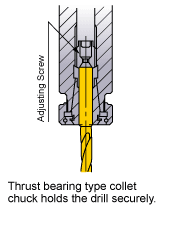 |
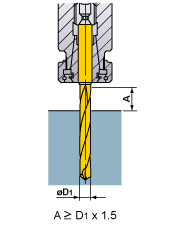 |
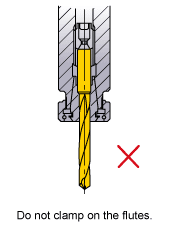 |
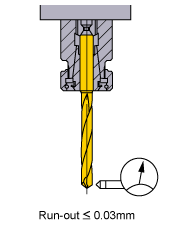 |
| Through Coolant Type | Coolant Handling | Thin Workpiece | Interrupted Cutting |
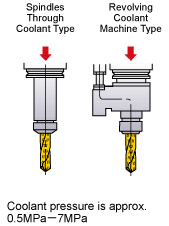 |
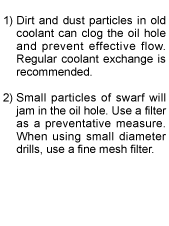 |
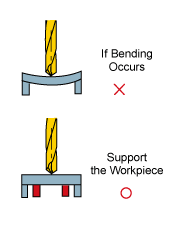 |
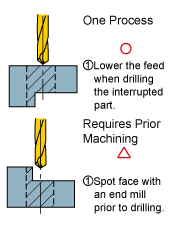 |
| Stepped Holes | Burring and Workpiece Chipping | ||
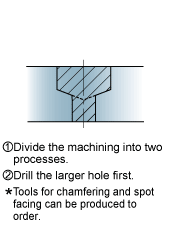 |
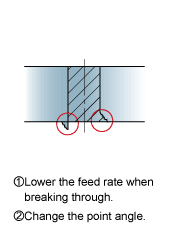 |
OPERATIONAL GUIDANCE FOR THE MNS TYPE LONG DRILL (L/D 10, 12, 15, 20, 25, 30)
FLAT FACE DRILLING
Drilling a blind hole
1. Drilling a pilot hole
- Use a drill with a larger (flatter) point angle than the super long type. Use the shortest flute possible.
- Ensure a high precision hole is drilled for the guide.
- Drill depth : Approx 1D or deeper. (Adjust the pilot hole depth according to the length of the super long type drill.)
2. Initial cutting with the long type drill
- Penetrate the pilot hole at low revolution. (Cutting speed 20 ─ 30m/min, feed rate 0.2 ─ 0.3mm/rev)
- Stop the long type drill 1 ─ 3mm short of the pilot hole bottom.
3. Drill the deep hole
- Start cutting at the recommended speed and feed with a non-peck (continuous feed) cycle.
4. Drill retraction
- After drilling, lower the cutting revolution about 1 ─ 2mm short of the hole end. (Cutting speed of around 20 ─ 30m/min)
- Retract the drill to the pilot hole depth starting point at a feed rate of 3000mm/min.
- Finally, clear the hole at a cutting speed of 20 ─ 30m/min and feed rate of 0.2 ─ 0.3mm/rev.
INTERRUPTED DRILLING
Drilling and breaking through on irregular faces or angles
1. Spot facing
- Machine a flat or the irregular face by using an end mill or slot drill capable of spot facing. Make the spot face diameter the same size as the required deep hole diameter.
2. Drilling a pilot hole
- Use a drill with a larger (flatter) point angle than the super long type. Use the shortest flute possible.
- Ensure a high precision hole is drilled for the guide.
- Drill depth : Approx 1D or deeper. (Adjust the pilot hole depth according to the length of the super long type drill.)
3. Initial cutting with the long type drill
- Penetrate the guide hole at a low revolution. (Cutting speed 20 ─ 30m/min, feed rate 0.2 ─ 0.3mm/rev)
- Stop the long type drill 1 ─ 3mm short of the pilot hole bottom.
4. Drill the deep hole
- Start cutting at the recommended speed and feed with a non-peck (continuous feed) cycle.
5. Breaking through
- When breaking through, the cutting edge can be damaged.
- A feed rate of 0.03 ─ 0.1mm/rev is recommended.
6. Drill retraction
- Finally clear the hole at a cutting speed of 20 ─ 30m/min and feed rate of 0.2 ─ 0.3mm/rev.
- Retract the drill to the pilot hole depth starting point at a feed rate of 3000mm/min.